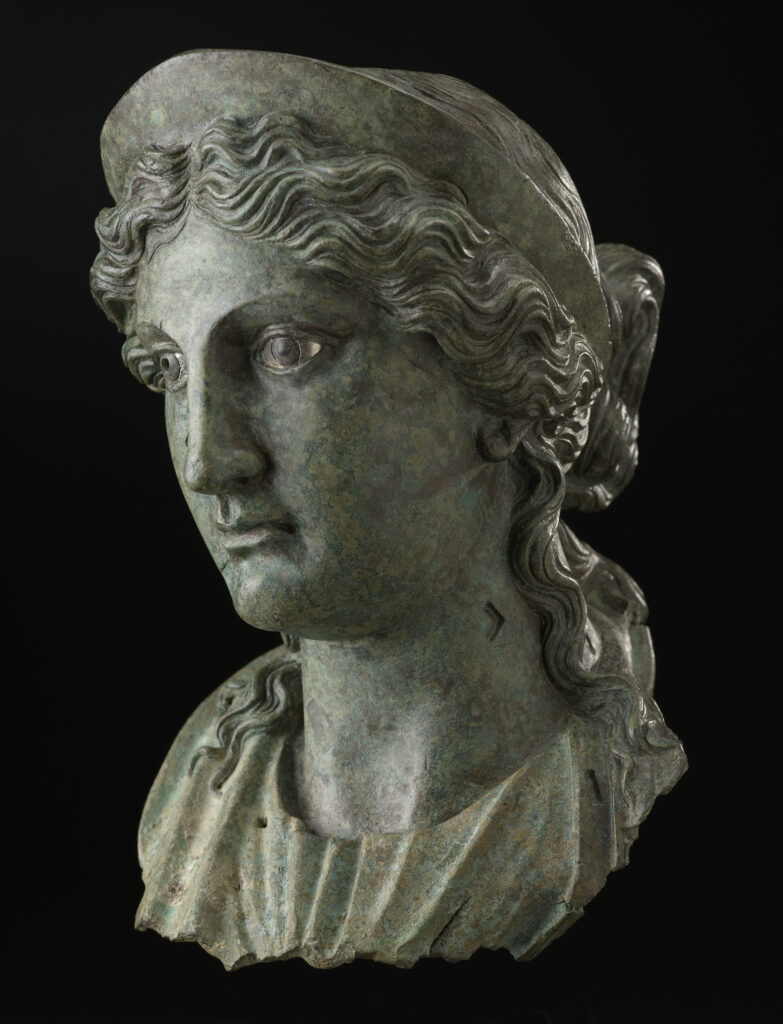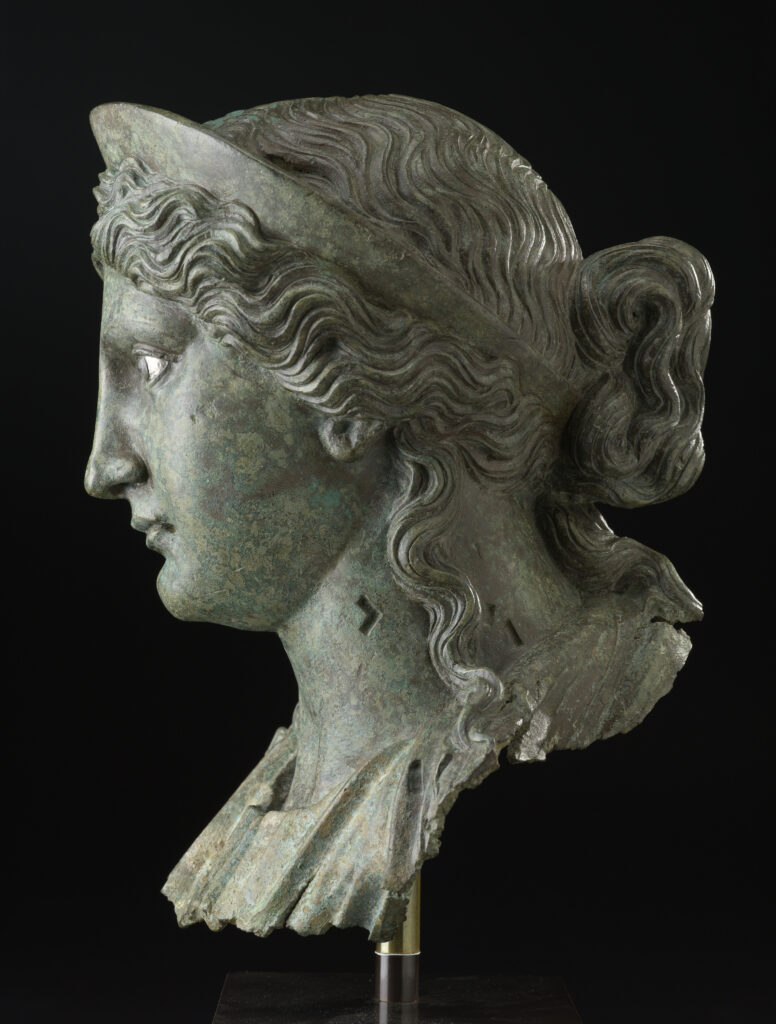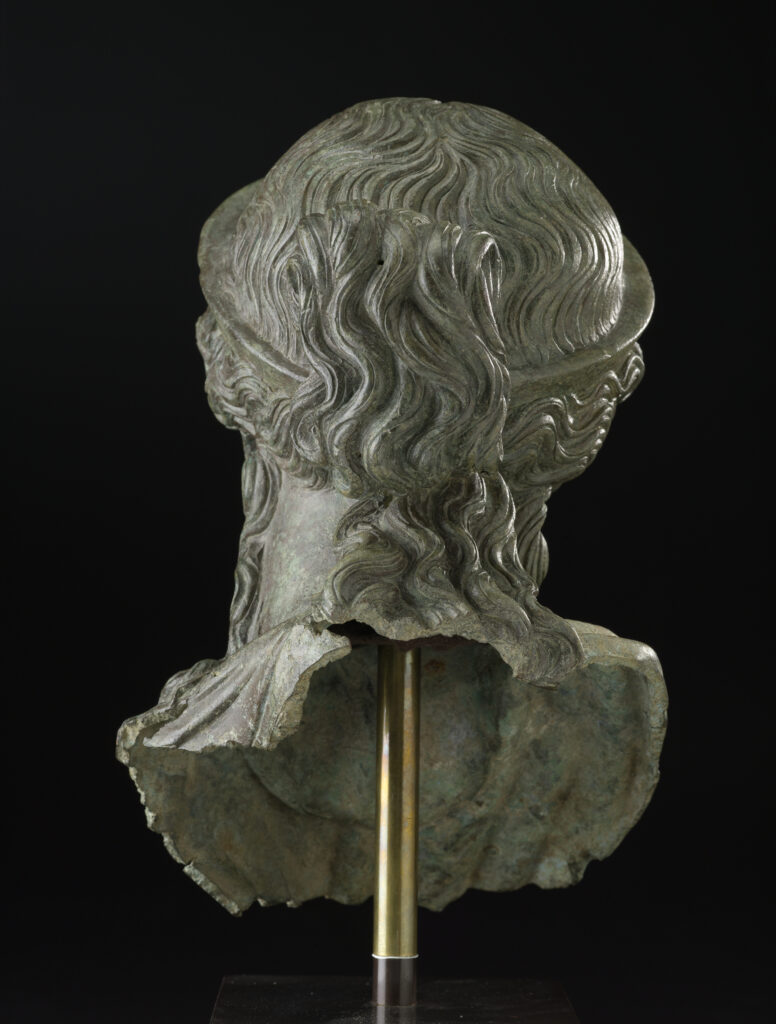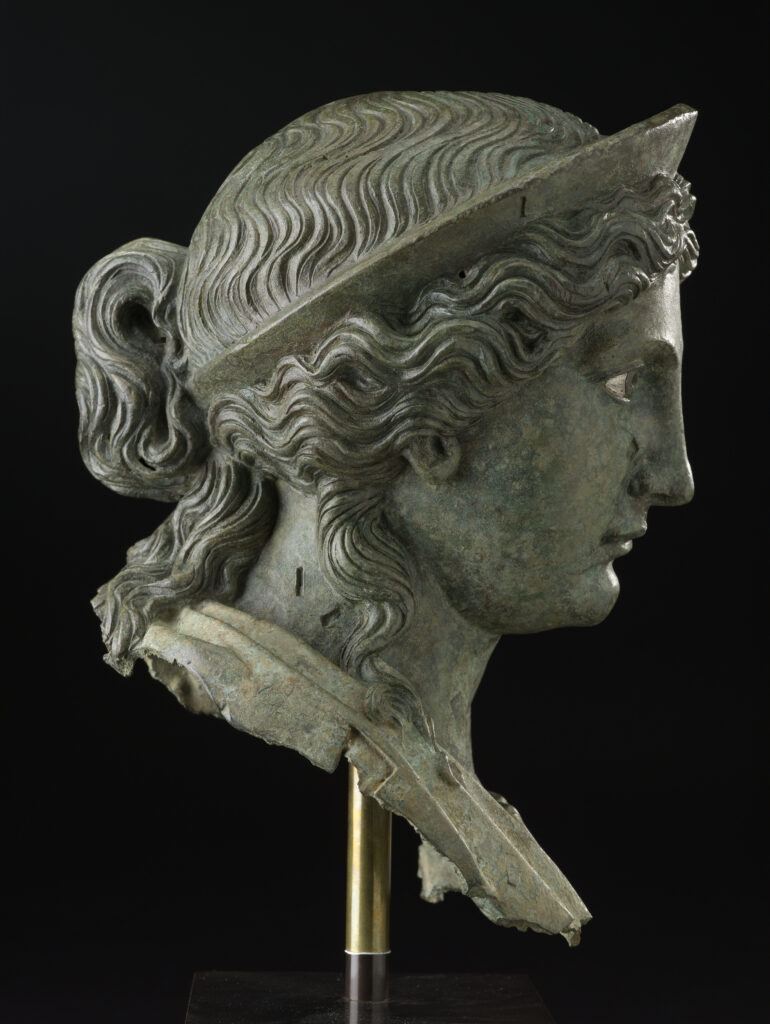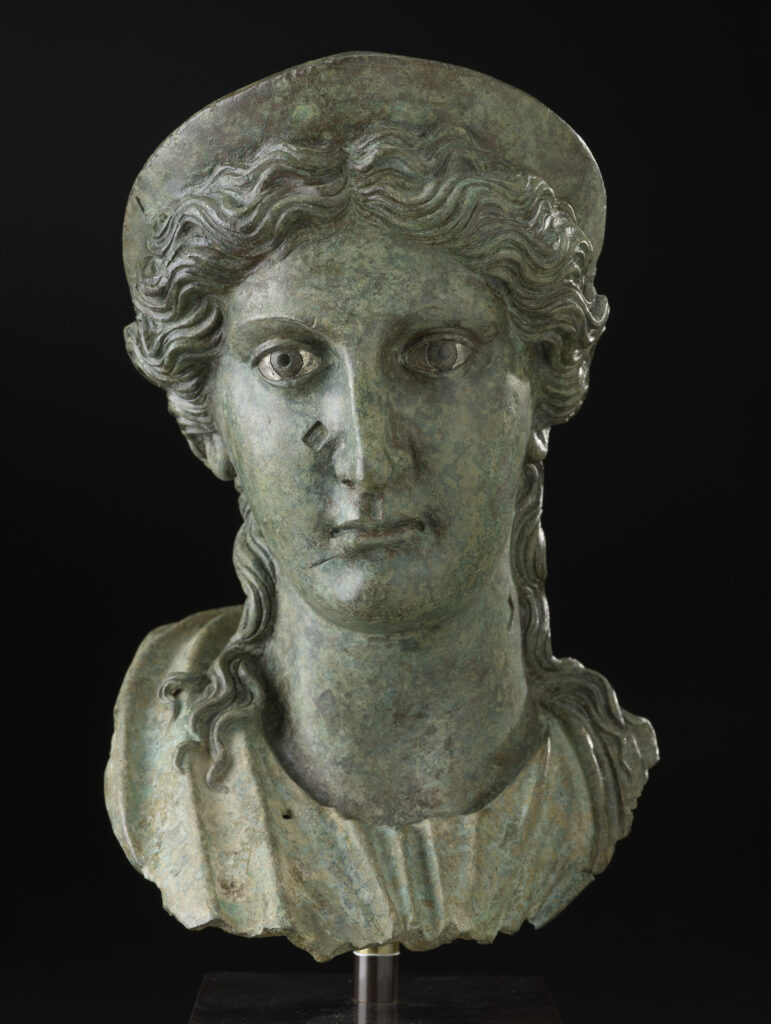Portrait Head of a Woman from a Statue or Bust (work of art)
Artwork Info
About
Key Ideas
- This ancient Roman bronze sculpture portrays a woman wearing a diadem, or crown. It may have been part of a statue or a bust (a sculpture of a person’s head, shoulders, and chest).
- Hairstyle, clothing, and facial features can help identify the subject of an ancient sculpture. Many sculptures were made to resemble gods and goddesses, political leaders, and other important figures of the time.
- The woman’s identity is unknown. Her facial features and hairstyle suggest that she was a member of the Julio-Claudian royal family. Her crown indicates that she was a powerful woman from a wealthy and prominent Roman family.
Learn More
A portrait is an artistic portrayal of a person, usually of the face. This object is considered a portrait-head because it depicts a specific woman from ancient Rome. Many ancient portraits represent individuals who are unknown today. Sometimes they can be identified by their resemblance to named portraits of the same individual or to members of a high-status family. Hairstyle and clothing can also indicate a person’s social status and help identify the subject of an ancient sculpture. Popular subjects for ancient Roman sculpture include gods and goddesses, political leaders, and other important figures. Ancient sculptures were found in both public spaces and private homes. They were used to display the wealth and status of individuals and families. Mythological scenes, historical events, and political figures were commonly depicted in sculpture.
This portrait-head’s hair is in a waved and parted updo and she is wearing a diadem, or crown. These details, along with her facial features, suggest that she was a member of the Julio-Claudian royal family. Her exact identity is unknown. The Diva Augusta diadem on her head hints that she was either Livia Drusilla or Julia Agrippina (also called “Agrippina the Younger”). Livia Drusilla was the wife of Augustus, the first emperor of Rome. Julia Agrippina was the wife of Emperor Claudius and the granddaughter of Augustus. Both Livia Drusilla and Julia Agrippina were powerful women, and many sculptures of them have survived to this day.
During the Bronze Age, Greek metalsmiths discovered that bronze was easier to shape and mold than pure copper. Bronze was made by combining copper and tin. Bronze had a lower melting point than copper, and it was stronger and easier to mold. Bronze was often used to make things like sculptures, coins, and household tools. Metalsmiths obtained the raw materials needed to make bronze from many places in the Mediterranean region. The island of Cyprus (south of modern-day Turkey) was their main supplier.
Additional Resources
Resources for Teachers:
- View a similar sculpture of Livia Drusilla at the State Hermitage Museum.
- Watch a video about ancient techniques for recreating a sculpture.
- View another Roman portrait sculpture at the NCMA.
Resources for Students:
- Watch a video to learn more about women in ancient Rome.
- Read an article about ancient Rome.
- Watch a video of a virtual model of imperial Rome.
- Read a short article about ancient Roman art.

